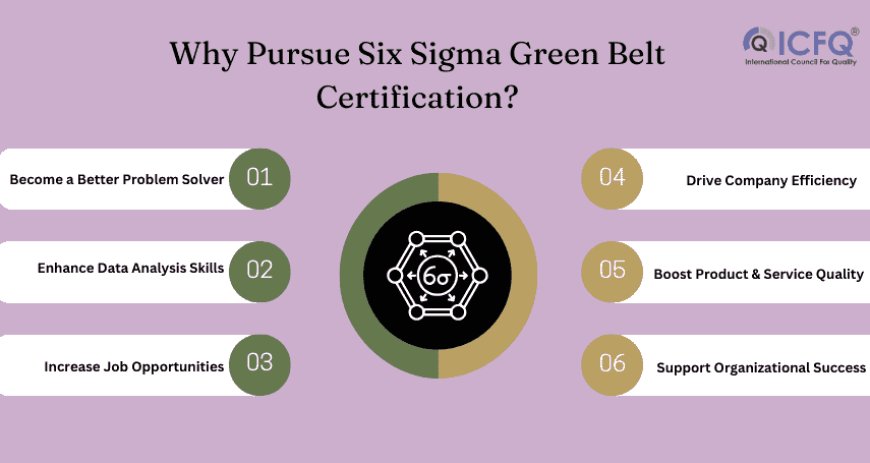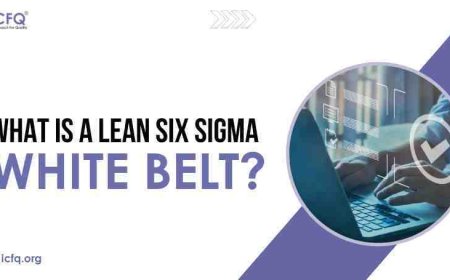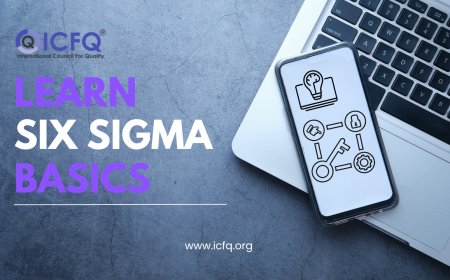Understanding Six Sigma Green Belt Certification
Discover the principles of Six Sigma Green Belt certification, learn its methodologies, tools, and benefits for efficient process improvement.

Six Sigma is a method used by businesses to improve processes by minimising errors and defects. It relies on data analysis and quality management to enhance efficiency and customer satisfaction. In industries where precision and quality are crucial, Six Sigma helps companies save costs, streamline operations, and stay competitive.
To become proficient in Six Sigma, individuals pursue certifications like the Six Sigma Green Belt. This certification indicates expertise in applying Six Sigma principles practically. However, the certification process can be challenging, involving selecting the right training and preparing for exams.
What is Six Sigma Green Belt Certification?
Six Sigma is a structured approach aimed at improving processes by minimizing defects and errors. It relies on statistical analysis and problem-solving techniques to identify and eliminate variations that lead to inefficiency.
A Six Sigma Green Belt is trained in the Six Sigma methodology and tools, capable of leading process improvement projects within an organization. They work under the guidance of Six Sigma Black Belts and are responsible for data collection, analysis, and implementation of improvement initiatives.
Importance of Six Sigma Green Belt Certification in the Industry
- Improves Process Efficiency: Helps identify and eliminate inefficiencies, leading to streamlined processes.
- Enhances problem-solving skills: Provides tools to analyze and solve complex business problems effectively.
- Data-Driven Decision Making: Focuses on making informed decisions using data and statistical methods.
- Increases Career Opportunities: Boosts employability and opens doors to roles in quality management and process improvement.
- Cost Reduction: Helps organizations reduce waste, optimize resources, and improve profitability.
- Improves Product/Service Quality: Leads to better quality control, customer satisfaction, and consistent results.
- Supports organizational growth: drives continuous improvement, fostering innovation and competitive advantage.
- Industry Recognition: Validates expertise in Six Sigma methodologies, making professionals stand out in the job market.

Challenges and Considerations
The Six Sigma Green Belt Certification process comes with its challenges and considerations. Common misconceptions can lead to unrealistic expectations while understanding and applying complex concepts can pose difficulties. Choosing the right training program is crucial for success, ensuring access to quality education and support throughout the certification journey.
Common Misconceptions About Six Sigma Green Belt Certification:
-
Certification guarantees immediate success.
-
Only certain industries benefit from Six Sigma.
-
Certification is only for senior professionals.
Challenges Faced During the Certification Process:
-
Understanding complex statistical concepts.
-
Balancing certification requirements with work commitments.
-
Applying theoretical knowledge to real-world scenarios.
Importance of Selecting the Right Training Program :
-
Choosing a program with practical, hands-on training.
-
Ensuring the program offers support and resources for exam preparation.
-
Selecting a reputable training provider with experienced instructors.
Why pursue Six Sigma Green Belt Certification?
Six Sigma Green Belt Certification helps professionals become better problem-solvers and data analysts. It gives them the skills to find and fix problems, making them more valuable to employers. Having a Six Sigma Green Belt certification can lead to many job opportunities. It can qualify you for roles like process improvement specialist, quality engineer, or project manager in various industries.
With Six Sigma Green Belt skills, professionals can make their companies run smoother. They can find ways to save time and money, improve products or services, and make customers happier. This all adds up to a more successful and efficient organization.
Key Components And Rquirements
Curriculum Overview:
-
Six Sigma Green Belt training covers DMAIC methodology, statistical tools, process mapping, and root cause analysis.
-
Participants learn to identify areas for improvement, analyze data, implement solutions, and sustain improvements.
Requirements for Obtaining Six Sigma Green Belt Certification:
-
Complete an accredited training program.
-
Participate in practical projects demonstrating Six Sigma application.
-
Pass a certification exam on Six Sigma principles and tools.
Examination Process and Passing Criteria:
-
The exam includes multiple-choice questions.
-
Passing requires meeting a minimum score.
-
Candidates must complete the exam within a set time limit.
-
Successful completion leads to Green Belt certification.
Preparing For Success
Preparing for success in Six Sigma Green Belt certification involves diligent study, practical application, and leveraging available resources to ensure comprehensive understanding and readiness for the exam.
Tips for Preparing for the Certification Exam:
-
Schedule regular study sessions to cover all exam topics thoroughly.
-
Practice solving sample questions to familiarize yourself with the exam format.
-
Seek clarification on any concepts or areas of difficulty from instructors or online resources.
-
Utilize study guides and reference materials to supplement your learning.
-
Consider joining study groups or forums to discuss concepts and share insights with peers.
Importance of Practical Application and Real-World Projects:
-
Apply theoretical knowledge to real-world scenarios to reinforce understanding.
-
Participate in hands-on projects to gain practical experience in problem-solving.
-
Learn from real-life examples and case studies to understand the application of Six Sigma methodologies in different contexts.
-
Engage with mentors or experienced practitioners to guide you through practical applications and project execution.
Resources and Study Materials Available for Aspiring Green Belts:
-
Online courses and training programs offer comprehensive curriculum coverage.
-
Access to online forums and communities where practice provides resources, tips, and best practices.
-
Practice exams and study guides tailored specifically for Six Sigma Green Belt certification preparation.
Continuing Education And Growth
Importance of Continuous Learning:
-
Vital for staying updated and competitive.
-
Enhances skills and adaptability.
-
Ensures proficiency in problem-solving methodologies.
Options for Advanced Certification:
-
Progress to Six Sigma Black Belt or Master Black Belt.
-
Gain deeper knowledge and leadership skills.
-
Qualify for larger-scale projects and mentoring roles.
Maintaining and renewing certification:
-
Engage in ongoing education and skill development.
-
Lead improvement projects within the organization.
-
Fulfill continuing education requirements for renewal.
Six Sigma Green Belt Certification is your ticket to success in today's job market. It gives you valuable skills in solving problems and improving processes, making you a valuable asset to any company. If you're thinking about getting certified, go for it! It might be challenging, but the benefits are huge.
Understanding Six Sigma Green Belt Certification isn't just about learning—it's about changing how you work for the better. By embracing its principles, you'll not only boost your career but also help your company succeed.





























